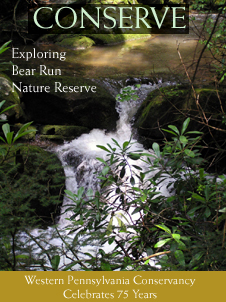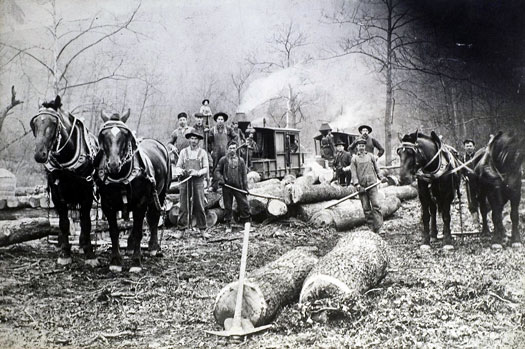
The Significance of a Stream In addition to being designated as a Pennsylvania Scenic River and an Exceptional Value Over the years, first the Edgar and Lilianne Kaufmann family and then the Western Pennsylvania Conservancy have continually acquired additional properties to enlarge the boundaries of Bear Run Nature Reserve. Today, WPC owns most of the entire watershed, The Bear Run Nature Reserve lies within the Allegheny Mountains of Pennsylvania. As the mountains extend through West Virginia north through Indiana County, they draw southern influences north through the valleys and northern influences south along the ridges. Mixed mesophytic forests extend north through southern Fayette County. The forests along the big rivers like the Youghiogheny show some of the richness that characterizes these forests. The Allegheny Mountains support a number of animal species, like the green salamander, and plant species, such as the American bugbane, that in Pennsylvania are confined to these forested mountain ecosystems.
Tramroads were common during the heyday of lumbering in western Pennsylvania and extended lumbering into previously inaccessible forest areas. Traces of tramroads remain at Bear Run Nature Reserve. What makes the reserve significant is its size and that it represents an important forest The mountainous topography of the reserve is distinctive as well, with long views of the Youghiogheny Valley, massive blocks of sandstone tumbled along the slopes, and streams dropping down from their headwaters, bubbling over rocks and through thick Scars from coal mining and its related industries are still visible throughout southwestern Pennsylvania. At Bear Run, thanks to the careful consideration given the site, first by the Kaufmanns, then by WPC, most small underground mines have been closed up, and More than 20 miles of marked trails traverse the Bear Run Nature Reserve and join many miles of other regional trails. All are open to the public to explore. The grounds of Fallingwater are part of the reserve and the world-famous Frank Lloyd Wright structure is
|
Conservation | | Fallingwater | | Gardens | | Join WPC | | Contact | | Press Room


